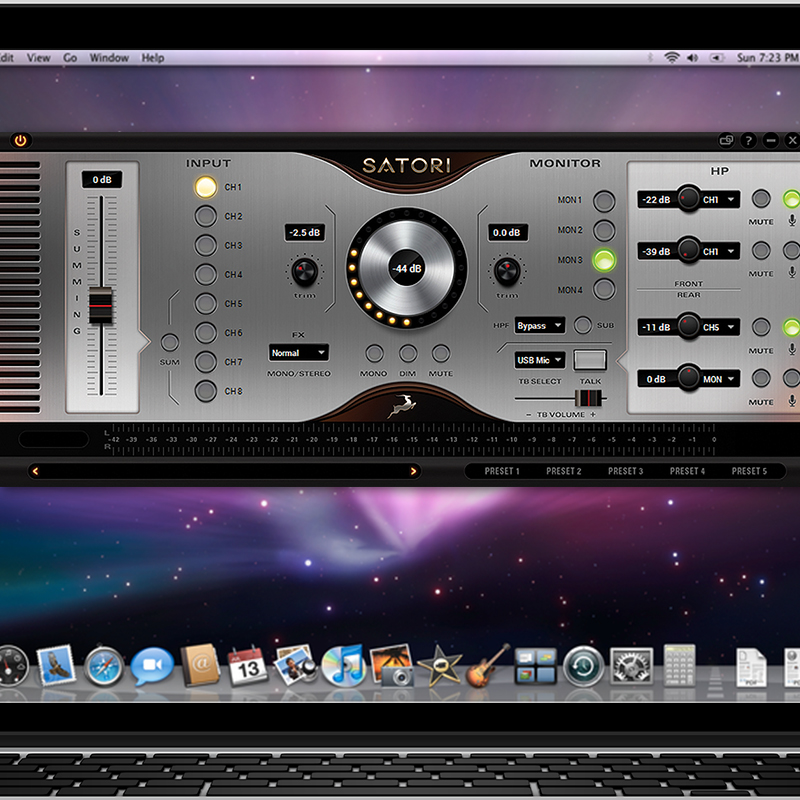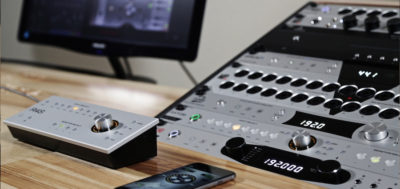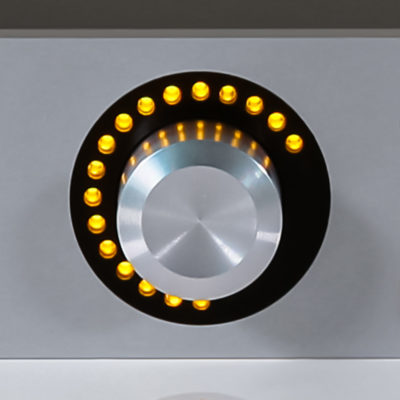New Gear Review: Antelope Satori Monitor Controller and Summing Box
The new Satori from Antelope was designed to make routing, calibrating, and controlling monitoring systems a breeze for small and mobile studios, and further sweetens the pot by adding on analog summing and remote control capabilities.
Whether you work out of a personal mix suite, voiceover studio, home or project studio, if your room lacks a console with robust monitor routing and switching, this box is aimed at you.
A few of the most notable features here include headphone cue handing with multiple points of talkback, up to 8 stereo input sources which can be routed to a variety of outputs or summed together, 4 main stereo outputs for speaker or source switching, and easy calibration to ensure smooth switching between your monitors.
Since I often work in exactly the kinds of recording setups that would benefit from such a system, when I received notification that Antelope’s new Sartori had arrived for me to review, I raced over to my mailbox and brought it back to my studio.
Plugging In
Upon opening the package, everything appeared nicely laid-out and neatly stored. Antelope’s supplied connectivity charts give some good inspiration and insight into what this box is capable of in terms of routing. The unit itself is aesthetically pleasing and well built, and the volume attenuator has a nice tactile feeling to it.
Hooking up the Satori was easy enough. I patched the main output of my Pro Tools rig into the left and right inputs of Channel 1, and patched an external iPhone hook-up into Channel 2. Then I patched up my four sets of monitors to each of the four stereo monitor outputs. Once the audio routing was taken care of, I plugged the USB from the Satori into my Mac Pro and downloaded and installed Satori’s client app.
The app is intuitive and lays out all your routing right in front of you, with no hidden menus.
In Use
The Satori sounds great, and the app that comes with it makes routing on the fly a breeze. It’s a snap to change volume and monitor settings, and this box has a generous number of ins and outs for monitoring and summing.
The Satori’s four headphone outputs sound great and have independent controls for source, level, talkback and general mute—a feature worth noting. The addition of talkback and summing features are also welcome and help this unit compete with other high-end one-stop routing boxes like the Dangerous D Box.
But what about the sound? The Satori stays very true to source material, which for me is absolutely critical. For years, I have used passive attenuators to control monitors in order to make sure that nothing colors the sound. However, taking the Satori for a spin has helped change my attitude towards monitoring boxes and how transparent a truly good one can be.
Fine Tuning
The ability to easily fine-tune your monitoring system’s output is essential, as it allows you to hone in on a perfect decibel balance between speakers. Thanks to its digital controls, this only takes a couple minutes to do this with the Satori—including a good listen through on all your playback systems. The Satori makes it easy to trim any of the four main outputs by a range of 12 dB (-6dB to +6dB) allowing you to keep your volume the same when switching back and forth between monitors.
This came in handy for me when adjusting the balance between my two main pairs of monitors—the Focal Twin6 Be and the passive Avantone MixCubes. Though I run the Avantone MixCubes off an amp with a stepped attenuator, the Focals do not have a volume control of any kind (aside from a a line level adjustment switch to toggle between -10dBV or +4dBu operation).
Since the Focal Twins don’t offer much level control I started by setting the attenuator on the MixCubes’ amp to roughly match the level coming out of the Focals. I was able to get it close by playing some test noise and adjusting the MixCube’s amp stepped attenuator alone—but not close enough!
The Satori’s trim function allowed me to quickly trim exactly -3.5 dB off the signal sent to the Avantones amp, making the switch between my monitors a thing of perfectly-balanced aural beauty.
The Mobile Device App
I didn’t get a chance to review the hardware RS4 remote that’s available for the Satori, but I did get to try the iOS app. (An Android version is available as well).
It’s really easy to set up, and almost as useful as the main App. Its interface is clean and features a huge volume knob that you can’t miss. You have access to all the features of the unit, most notably the headphone and cue mix selections.
Since it works on your local network, it is possible to do your “next room over” mix checks while controlling the volume and switching between monitors in the process, or control headphone levels and sources directly from the live room (wowing your clients with how fancily your studio is integrated.)
As long as you are in range of your WiFi, you have control over your monitoring chain. You can even use your phone or tablet as a remote talkback device. This is the first monitoring unit I’ve seen that implements smartphone and tablet integration and does it well.
Location Sound Recording Use
I’ve been searching for a compact monitoring unit with a low power draw for remote work for a while now, so I jumped at the chance to take it for a spin in my mobile recording rig.
The Satori worked as seamlessly here as it did in the studio. I even found a use for its four headphone outputs, sending one cue to a camera feed, one to a client’s headphones, one to my assistant’s headphones, and one to my own headphones.
With independent control and cue selection for each headphone output, this box kept everyone happy.
Summing it Up
The Satori sounds great and would serve equally well in a mix suite, voiceover studio, home or project studio.
The build is robust, the connectivity is more than ample, and the four independent headphone outputs, allow you to accommodate cue mixes for larger recording or overdub sessions. This feature alone cuts out the middleman of a headphone amp system, allowing one device to control all your monitoring needs.
The main outputs sound clean and transparent, with no perceivable coloration or noise, and even the most picky engineer will appreciate how easy it is to fine tune each monitor’s output from the Satori.
On top of all the practical nuts-and-bolts features packed into this little box, it doubles as an 8 channel summing give you plenty of analog headroom for mixing, and an easy way to integrate hardware signal paths into your workflow. Additionally, the iOS or Android app control can be put to use in many creative ways. The Satori is a win in my book.
The Antelope Satori is available for a street price of $1475-$1775, or $1999 with the optional remote.
Matt McCorkle is an audio creative based out of Brooklyn, NY.

Please note: When you buy products through links on this page, we may earn an affiliate commission.











